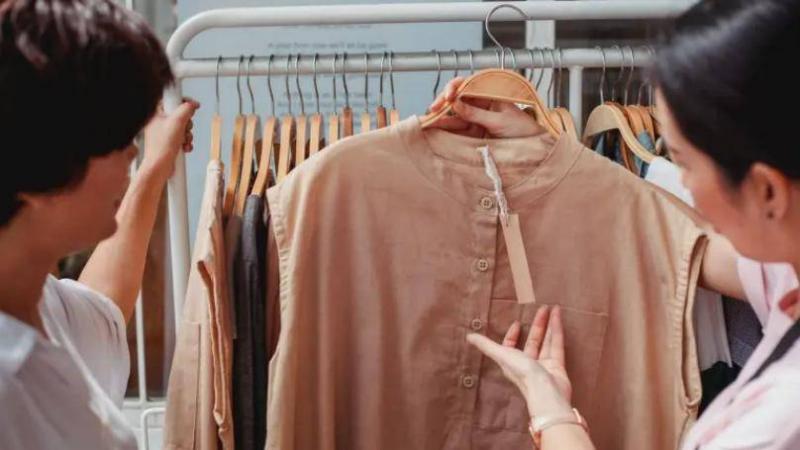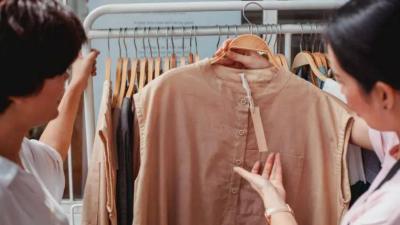Sharine, a twenty-something woman, found herself facing financial difficulties, leading her to turn to her wardrobe filled with clothes. She began selling them on social media following the rise of the second-hand clothing phenomenon. In an interview with "Al-Madaen," Sharine noted that she decided to invest in her clothes on social media due to the challenges of renting and opening a store. The beginning was tough, but she persisted and created her own market where she sells her clothes, eventually expanding to sell her friends' clothes while taking a commission from the profits.
Before the economic crisis hitting Lebanon, the second-hand clothing market had significantly declined. However, the drastic collapse of the purchasing power of Lebanese people revived the thrift market's status. Technological advancements and the virtual world entered the commercial market as pages for selling used clothes emerged, often from individuals looking to increase their income by selling old clothes. Many Lebanese had previously experienced a "buying spree" during the time of the fixed exchange rate at 1500 Lira, buying far beyond their needs.
"Today, many owners of unused clothes are turning to sell them to earn money," says Sharine, highlighting that "some sell to relatives and acquaintances, while others open sales to everyone, offering delivery services." Regarding prices, Sharine mentions that they vary according to the season, type of item, and fabric, but they are certainly much cheaper than buying new clothes. She provides her customers the unique opportunity to try on items at her home, where the goods are located, since return and exchange options aren't available.
The methods for selling second-hand clothes are diverse; in addition to selling by the piece, watching signs indicating sales by weight has become popular, often featuring new clothes. Prices for a kilogram of clothing range between 100,000 and 600,000 Lira. According to Rayan Qassem, a major trader in this field, "selling by the kilo is a new phenomenon that emerged from the crisis, where shipping containers of used clothing from Europe arrive in large bags, and the price per kilo depends on shipping costs, type, and source."
Rayan confirms that demand for these bags is increasing daily from small traders who "Arabize" the goods and resell them, with the bags often containing surprises in terms of quality and global brands. He mentions that some traders open the bags before selling them to select high-end items, which are then resold at a higher price. Regarding price increases and the impact of the dollar crisis on this market, he states, "There’s no doubt that with the increase in customs tariffs on goods, prices will rise slightly, but our prices are not reliant on the dollar's price."
As the demand for second-hand clothes grows, concerns emerge about the potential risks associated with this type of clothing, including skin diseases and infections. Dr. Rana Khoury, a dermatologist and cosmetologist, affirms that while they cannot prevent citizens from buying used clothes, they must guide them. "The most notable precautionary measures include washing and ironing the clothes after cleaning them to kill insects and viruses that high temperatures can eliminate," notes Khoury.
She asserts that "some clothing may carry more than one risk to human health, as they may cause fungi that could affect hair and skin, requiring long treatments, as well as types of bacteria that could induce skin infections. This is particularly harmful to individuals with wounds or circulatory issues, potentially causing skin and muscle infections."
Regarding viral diseases, Khoury states that used clothing could carry warts, herpes, chickenpox, and other skin-transmitted viruses that might lead to rashes requiring prolonged treatment, with some conditions lingering despite healing, like herpes. The doctor also addresses preservatives that sellers spray on clothes to maintain their quality, which can cause allergies and skin irritation, emphasizing that all these risks stem from packaging methods, transportation, and exposure to moisture, thus washing clothes before use and ironing them is extremely important.
Whether selling old clothes or purchasing second-hand garments, these actions reflect two sides of a crisis that plunges the country deeper into poverty, pushing people to devise solutions to navigate these challenging times.




